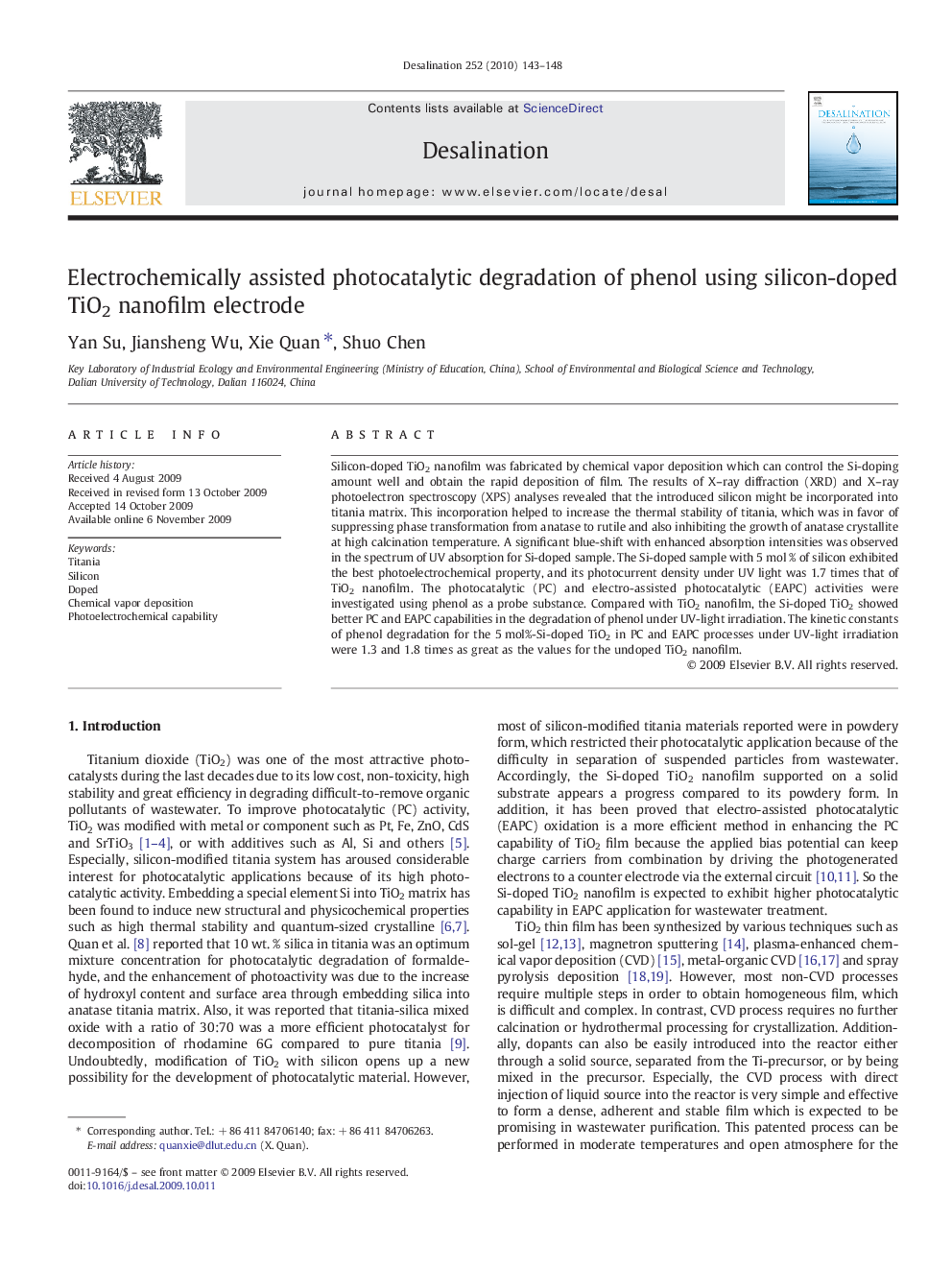| Article ID | Journal | Published Year | Pages | File Type |
|---|---|---|---|---|
| 625958 | Desalination | 2010 | 6 Pages |
Silicon-doped TiO2 nanofilm was fabricated by chemical vapor deposition which can control the Si-doping amount well and obtain the rapid deposition of film. The results of X–ray diffraction (XRD) and X–ray photoelectron spectroscopy (XPS) analyses revealed that the introduced silicon might be incorporated into titania matrix. This incorporation helped to increase the thermal stability of titania, which was in favor of suppressing phase transformation from anatase to rutile and also inhibiting the growth of anatase crystallite at high calcination temperature. A significant blue-shift with enhanced absorption intensities was observed in the spectrum of UV absorption for Si-doped sample. The Si-doped sample with 5 mol % of silicon exhibited the best photoelectrochemical property, and its photocurrent density under UV light was 1.7 times that of TiO2 nanofilm. The photocatalytic (PC) and electro-assisted photocatalytic (EAPC) activities were investigated using phenol as a probe substance. Compared with TiO2 nanofilm, the Si-doped TiO2 showed better PC and EAPC capabilities in the degradation of phenol under UV-light irradiation. The kinetic constants of phenol degradation for the 5 mol%-Si-doped TiO2 in PC and EAPC processes under UV-light irradiation were 1.3 and 1.8 times as great as the values for the undoped TiO2 nanofilm.
